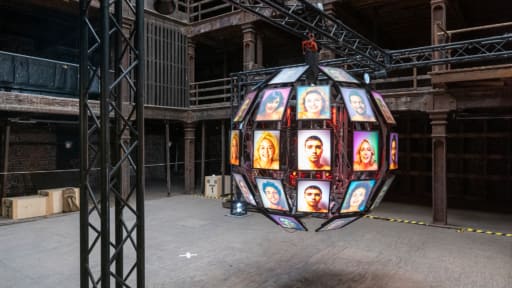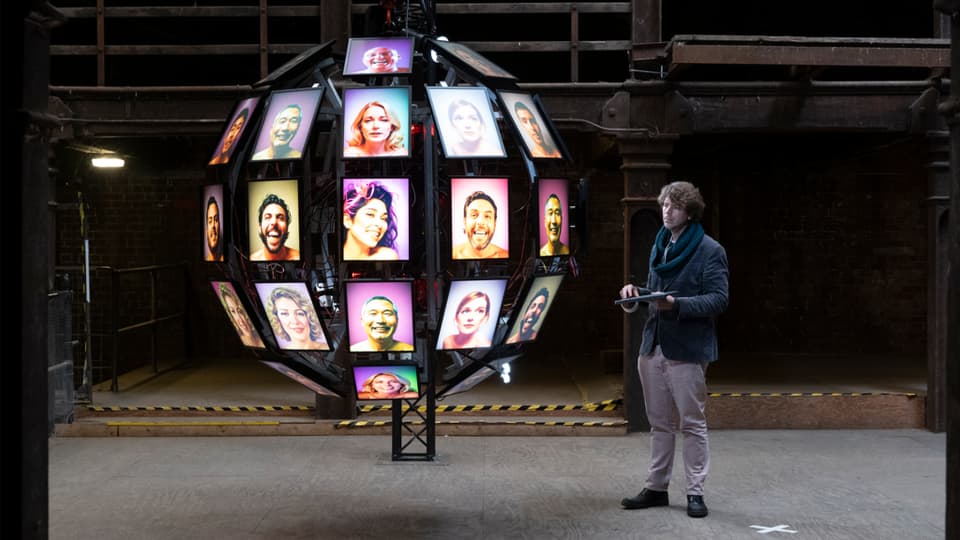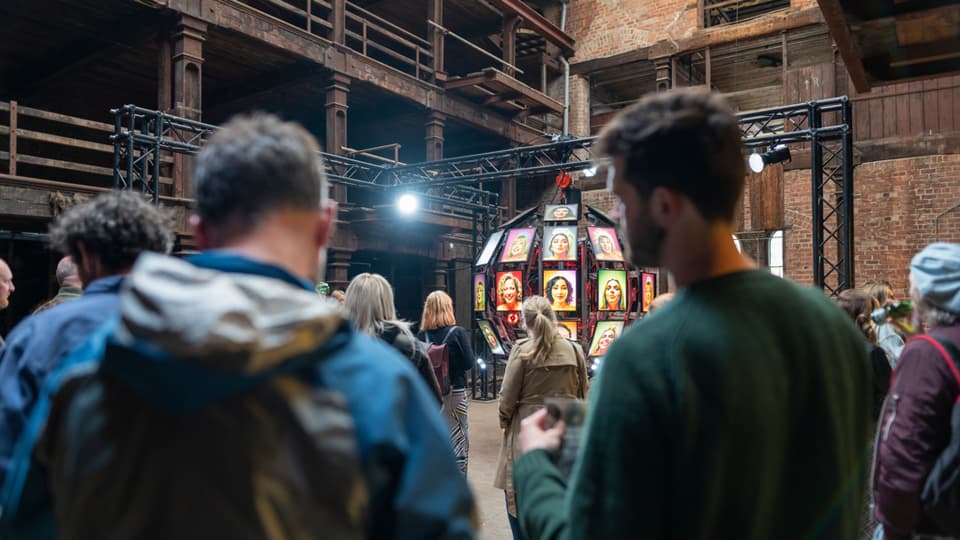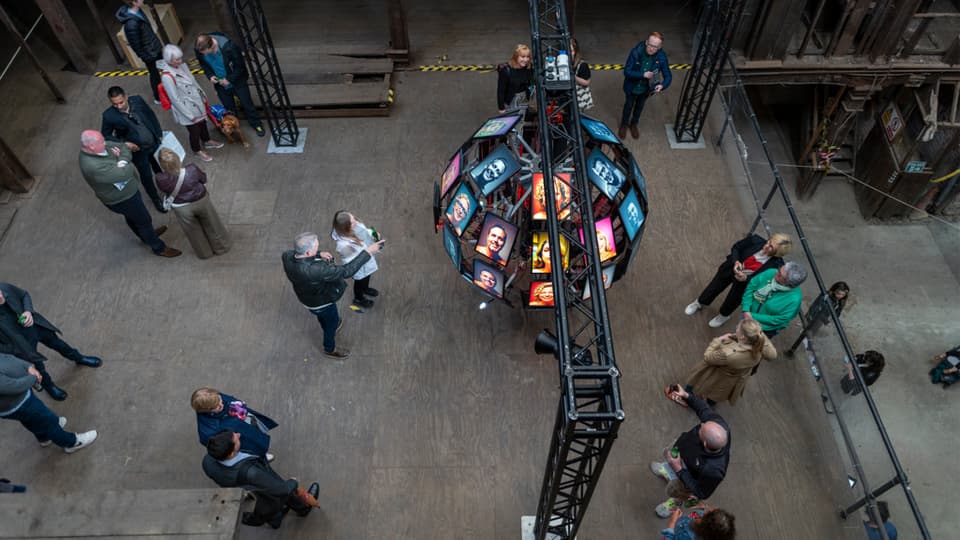How Coyote Helped Transport a Unique Piece of Modern Art from the Netherlands to Northern Ireland

The collaboration between Belfast Photo Festival and Coyote was based around shared expertise and understanding. (…) There was great collaboration with the Coyote Sales teams and Customs team to make sure that we both understood and could demonstrate the unique nature of the consignment on a commercial invoice –Toby Smith, Director of Development &Fundraising at the Belfast Photo Festival
Quick Shipper Facts:
- A charitable organization that hosts an annual photo festival in Belfast
Challenge:
- Timely and safe transport of an artistic installation, which included computer and electronic equipment, from the Netherlands to Great Britain (Northern Ireland)
Coyote Services Used:
Transporting art requires not only ensuring timely delivery, especially with strict deadlines, but also guaranteeing that no damage occurs during the process. This presents a significant challenge for logistics providers, who gain valuable experience from handling unique, high-value items, both financially and artistically.
At Coyote Logistics, we faced such a demanding task in June 2024 when we were chosen to transport the art installation Smile AI by Matthias Oostrik, a technology artist who works at the intersection of digital art, installation art, film, and architecture.
Smile AI was exhibited during the 10th edition of the Belfast Photo Festival (June 7-23, 2024). This required us to organize its transport from Amsterdam to Belfast, Northern Ireland, and handle all the paperwork related to this shipment.
Both Matthias Oostrik and Toby Smith, Director of Development &Fundraising at the Belfast Photo Festival, shared their experiences of working with Coyote Logistics.
Coyote: How are you enjoying the Belfast Photo Festival and its atmosphere so far?
Matthias: There’s like 150 people allowed in here because it’s a very old building, and we were packed all the time. So that was good. People seem to enjoy it very much, with lots of laughing involved. So, yeah, a very good atmosphere. This is a beautiful place to show this work.

Coyote: What inspired you to create installations that blend art and technology?
Matthias: Well, it’s just that I’m very much interested in technology, and I’m a programmer. I’m very much interested in having the audience be a part of my artworks. I approach it very technologically. I’ve been using AI for a long time. It wasn’t called that then;it was called machine learning.
I’m especially trying to study my audience, trying to understand with technology where they look, how they look, how they behave, and have that be part of the installation. So, I used a lot of computer vision for that. Then, one and a half years ago, the whole generative AI started.
With the AI, I was like, ‘OK, it’s a hype, and there are a lot of claims that are not gonna be a reality, but it’s a really interesting technology.’Then I just started messing around with it and trying to see how I could combine AI with my audiences, and, well, this is the result so far, but it’s very much an ongoing process. The image generation that’s already a couple of years old is still being improved all the time. Like the way it is now able to pick up faces quickly and make a new face that is so similar to the face you put into it—that’s also pretty recent.
Just seeing what is out there and how I can actually use that to sort of tell the story to my audience well, making them laugh and hopefully making them uneasy. There are all sorts of layers there. It’s not that I want to warn the world about AI. I just want to show how it works.
I want to show what you can do with it and what it can’t do, where the pitfalls are, and make the whole AI process a little bit transparent to art audiences or tech audiences.
Coyote: Is your Smile AI project a commentary on the development and increasing invasiveness of artificial intelligence in our life. Do you think we’re already living in a dystopia?
Matthias: Well, there are much worse things out there right now than AI, I think. AI can be very beneficial to our creative process, although there will be shifts. AI probably makes some jobs less desired. Well, now there’s a lot of stuff you can do really quickly that you used to need a team for, but, like in my case, I couldn’t afford a team anyway, so now I can do something that I couldn’t do before. And still, it needs a lot of human input to actually be enjoyable for humans.
The current generations of AI are very good at certain tasks, but they are by no means general AIs. The best way I’ve heard them described is statistics on steroids. And all those statistics are very interesting, and you can do a lot with them, but I’m not afraid that statistics will kill us in the end.
I have no reason to assume the whole singularity thing, where an AI becomes smarter than us, is currently happening. Maybe there are new technologies out there that I don’t know of, but with the current AI we have…No, we don’t have to be afraid that it will kill us, I think.

Coyote: What kind of logistical difficulties or challenges did you encounter while organizing previous editions of Belfast Photo Festival?
Toby: This is our 10th edition of the Belfast Photo Festival. It’s proudly framed as an international Photo Festival, as we have a reputation of showing contemporary photography and artwork from beyond the Isle of Ireland and even Europe. For our 10th anniversary edition we decided to produce more immersive installations in heritage buildings across the city. Rather than simply needing to acquire or produce photographs we actually had a need to import much more complex sculptures and custom electronic works ahead of schedule. There was a lot more weight and a lot more complexity about the assets we needed to bring into Northern Ireland for our audiences to enjoy.
Coyote: We had the pleasure to help you to move Matthias’ installation from Amsterdam to Belfast. How would you assess the experience of working with Coyote with this project?
Toby: First of all, Belfast Photo Festival is a non-profit, so we are obligated to get best value for money for our stakeholders around all the services that we commission. When working with an installation artist you’re dealing with a unique piece of work, this isn’t easily reproducible or even quantifiable. As such it has both a high replacement value and higher originality.
We needed to find a shipping company that I could trust would be both competitive on price, but also understand that what I was moving from Amsterdam to Belfast needed to be treated with the respect of a unique object rather than simply stock from a warehouse.
Coyote: Could you tell us a little about what it was like working with Coyote?
Toby: The collaboration between Belfast Photo Festival and Coyote was based around shared expertise and understanding. The current import and export situation in Northern Ireland –with its relationship to both the United Kingdom and Europe –is quite complex. Then there was an additional layer of complexity about specifically moving artwork –which if done correctly with our NIRU status –negates some of the duty, export and VAT charges that exist. The artwork is both a temporary export and it’s also an export for a cultural institution and public display.
There was great collaboration with the Coyote Sales teams and Customs team to make sure that we both understood and could demonstrate the unique nature of the consignment on a commercial invoice. Matthias’work is simultaneously art but also has a high volume of complex electronic components when disassembled for transport. With the festival being a public event –there is a tight and immovable deadline. Thankfully we both got the VAT and duty status correct and zero delays on transport. I think we made a really good team putting all those things together to make sure that Matthias’ shipment arrived in good time and in good order.

Coyote: Was there any aspect of our collaboration that especially stood out to you? Any specific moment or experience that highlights our cooperation?
Toby:
One of the things I’ve really enjoyed about the collaboration was a willingness to learn and investigate some of the challenges around the import and export status. There was a really fast turn around on those queries going back out to customs agents and back to us.
Then where needed, the clear signposting of third party resources such as the Dutch Chamber of Commerce to generate some of the paperwork we needed.
The process was as fast as I could reply, so in that sense, with the deadline of a festival and multiple artworks, it’s great to feel my suppliers are in control. I like them to be proactive and nudge me for the things they need, and that’s what I found with Coyote.
International shipping and export isn’t the most exciting of topics for a lot of people. It’s a highly technical bureaucratic process. Within that I really enjoyed the space for human personality –especially where I made errors as a client. It’s nice to know that I’m in an environment where I can be corrected without consequence.
Coyote: Would you like to add anything else?
Toby:
One of the other aspects of international shipping is the amount of different experts that were involved, and it was really welcome to me that I had a single point of contact to drive through both the import and export procedure and paperwork, and also the sales process.
It gave a really nice human and single contact to our side and I do have to say a big thanks to Bryony (Hunt, EU Business Development Executive) for being that amazing person in Coyote.
Coyote: Matthias, Toby thank you for your time.
Coyote Logistics had the pleasure of also being one of the sponsors of the Matthias Oostrik’s Smile AI exhibition during the 10th Belfast Photo Festival.
All photos courtesy of the Belfast Photo Festival